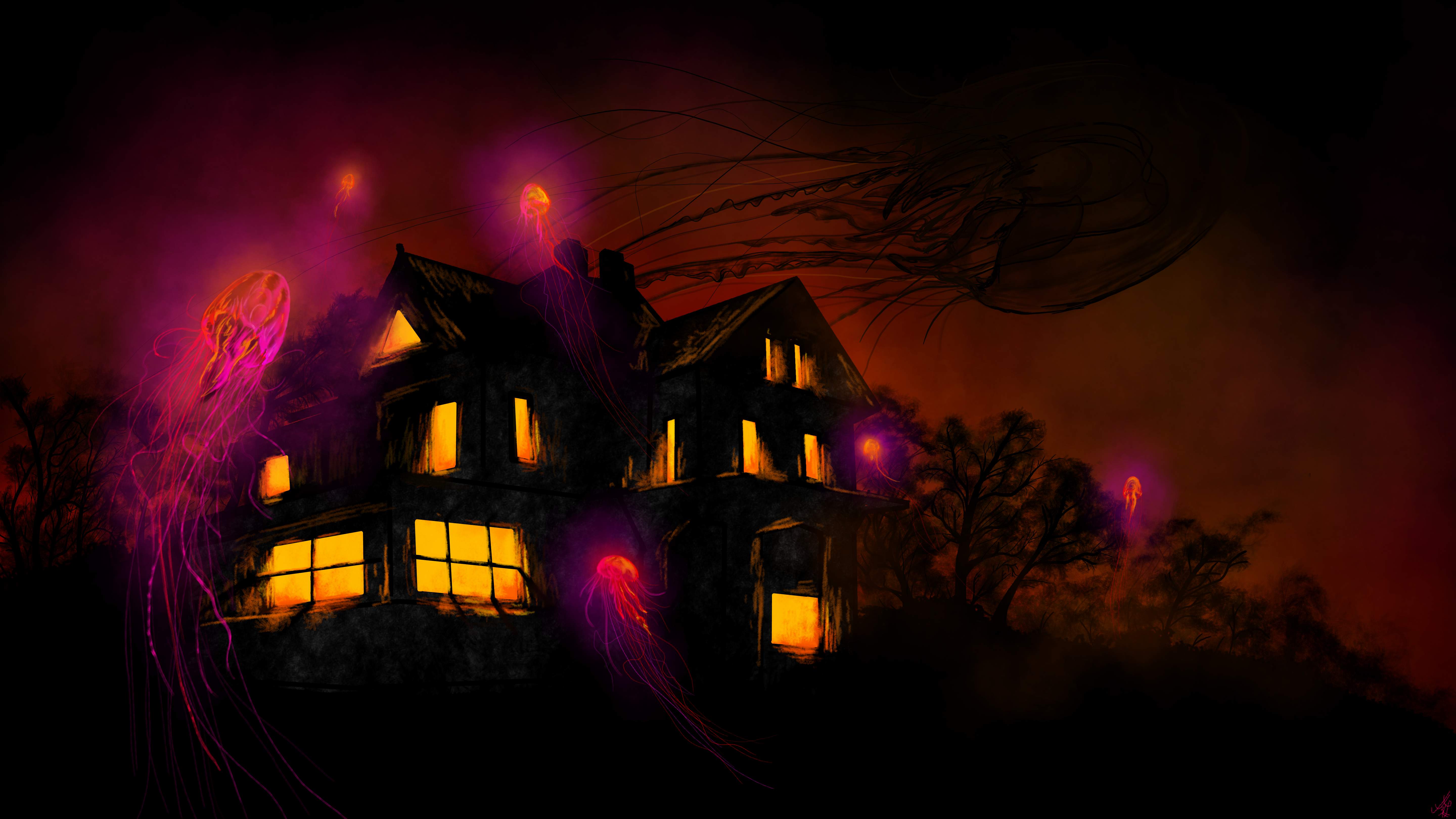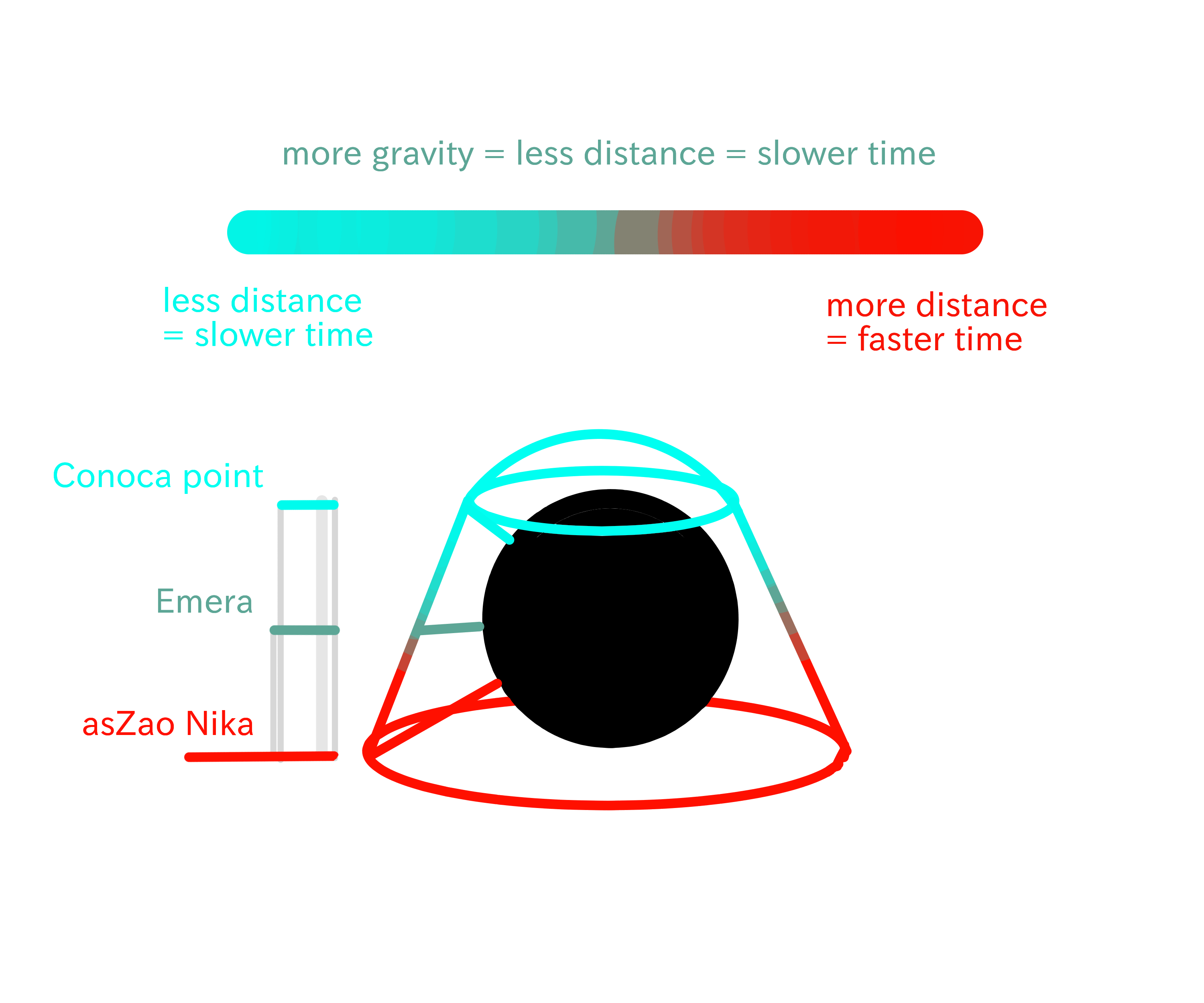
In Search of Architecture’s G-d

Aqgi, perhaps the most widely known Elder Divine being in Arsgri, has fascinated researchers and worshippers for eons, and rightfully so. The first fact to note is the G-d itself and its domain; as Aqgi, a being most often portrayed as a giant jellyfish of the caarsi species originating from the Arsgri Ocean, is — somehow — the G-d and patron of architecture. This confused many and rightly so; what could a jellyfish, of all things, have to do with buildings?
This is an age-old question and the most popular answer to it hides within the speculation of the G-d’s very existence. Whereas the gariette class of divine beings, whom have to ascend to g-dly status and only then may get worshipped, the Elder Divine beings may have possibly been created by creatures of the Ancient times, the first G-dseekers, who, unable to find any g-ds, settled for creating them and willing them into being.
This is where we arrive at the history of the white-streaked caarsi fish tribes. The connection here can be read from the very name of their species; these strange, eight-finned eel-like fish traditionally live in symbiosis with the caarsi jellyfish, utilizing the body of the jellyfish (more accurately, the space under the jellyfish’s bell) as their dwelling, and in return for this protection, safety and living space, they hunt and lure prey for both their own families and the jellyfish the consume, and offer protection against other predators for the jellyfish and often its brood.
The religion of these caarsi tribes is spectacular; for them, a G-d is not an immortal and all-powerful being, but a home, a creature within the body of which they live. In the belief of the caarsi tribes, a house that isn’t alive is a concept terrifyingly alien.
Similar to the caarsi tribes is the culture of Alma Gazde insects native to the Wordthief lands, which utilize the abandoned shells of much larger creatures as living spaces, although, in contrary to the previously mentioned fish, their religion is far from unified and if the idea of a house that is alive appears in their beliefs at all, it mostly refers to the no-less fascinating concept of the only G-ds being dead and gone, offering their bodies to their worshippers. Some example of these includes the passage concerning N’ngayah in the work of Chorach the Architect: “It is possible that the laytif Alma Gazde tribe may have directly contributed to the common misconception of N’ngayah’s death, given to N’ngayah’s carcass serving as the main architectural foundation of the Sanctuary, even if the gariette in question is very much alive.” (Chorach, 106) and the announcement of: “the G-d Allieqe has given us its body, mind, and soul to devour; rejoice in the taste of divine flesh, in the grace of its shell, in the silence of its heart! We, brethren of Uruqi, forever believers remain as long as our G-dhome stands here in the wastes!” written by an unknown Urugi author, deep in the heart of the Wordthief lands. The latter is notable especially for the use of the word “G-dhome”, which nowadays refers mainly to the actual dwellings of G-ds, rather than dwellings of creatures, related to or actively being G-ds.
Both of these serve as our anchor for how a G-d belonging to a small, relatively secluded culture could spread once it was breathed to life; as it certainly was not by encounters, given to no existing verified records of Aqgi having been seen at all.
The shape of a jellyfish’s bell carries a certain similarity to the shapes of the early settlements most ancient archei creatures tended to build, and the tunnels underneath can easily be compared to tendrils, leading to the religion of Aqgi easily spreading once cultural encounters became commonplace; and so became the connection between a home, and the bell of a jellyfish.
However, even more interestingly, so became the notion that homes — buildings — were alive.
All of this brings a burning question, though: Where is Aqgi?
Here, we return to Chorach.
After the ascension of the first Vitravnen, many of the ancient G-ds either completely vanished or lost much of their importance — Aqgi included — but in the eras after both of Vitravnen’s falls, the Elder Divine Beings saw what we can call a renaissance; new believers all across Arsgri, working to bring back the forgotten Old Ones and often redefining what they stood for, expanding their power. In Aqgi’s case, the jump from G-d of the Living Home to G-d of architecture was a fairly short leap.
After the third divine war with the ascension of Chorach the Architect, many started taking the old jellyfish G-d as an out-aged usurper of the rightful place belonging to the g-dling of Echir. Chorach themself disagrees; and, perhaps unsurprisingly, is a worshipper of Aqgi as well.
“The biggest reason why I see Aqgi as a G-d much above me and an ally in divinity, is their similarity in our domain; as Aqgi, to me, is not the G-d of Architecture removed from it, like asCintiati is separate from fear; no, Aqgi is architecture — the G-d of the home is the home, — and it is alive. In short, as the G-d of Truth who is undeniably, terribly Truth, for better and often for worse, I see myself in Aqgi, and being worthy of the title ‘Architect’ delights me. It is, in my eyes, the highest level of worship to Architecture itself as can be, even above honoring it through living in the dwellings built and created.” (Chorach, 345).
From here, and Chorach’s other works concerning Aqgi, comes the realization that perhaps Aqgi does not have a separate form that controls the architecture and the house separately, rather, it brings the image of an ever-changing immortal being consisting of billions of parts; all of whom are alive. Ergo, there in no G-dseeking to be done; rather, there is contemplation, especially of the nature of the home; in these modern times with architecture grand and giant and so far removed from the bell of the caarsi jellyfish.

Chorach brought another possibility concerning the G-d of Architecture’s whereabouts to the table, however, in their collaboration with the G-d of Identity, Arumis, and G-d of Chaos and Consequences, Grand Lie: and that of Aqgi being an ancient etymological root of Arsgri herself. This stems mainly from the recently popularized Theory of the Bell, which mapped out the surface of Arsgri and her flow of time, converting it to distance from the Observer and found out the only logical explanation for Arsgri’s shape is that of a bell-like shape resting atop the Observer’s sphere of influence, to quote one of said researchers, “like a giant wonky hat.” (Quirrel, 12). The theory had been converted into modern archei science only recently, but the concept actually predates the gariette — first found in the engravings and scripts of Void cults all across Arsgri and possibly being quite common knowledge at the time.
Therefore, seeing as Arsgri herself can be taken as a home; her walls stretching like the bell of a jellyfish; and with the knowledge of ancient relifica etymology and the positive portrayals of the Observer, the possibility that Aqgi is the same as Arsgri is not that far off.
Conceptually though, it creates a quite horrifying, haunted conclusion to arrive to.
The concept that we, all archei creatures, are just inconsequential worms crawling through walls of the dying home where the remnant of the True G-d dwells.
The G-dseeker’s Guide